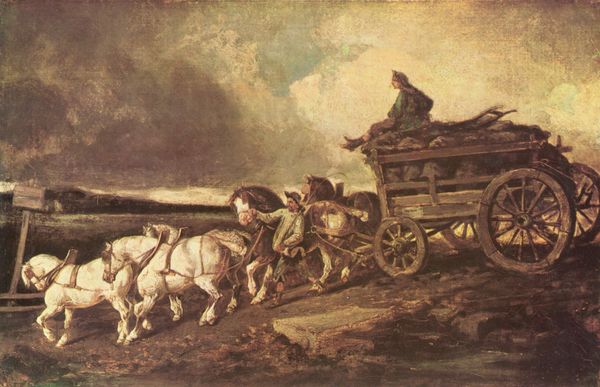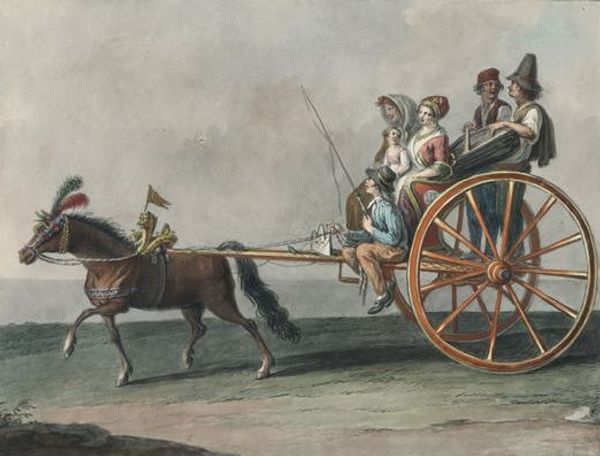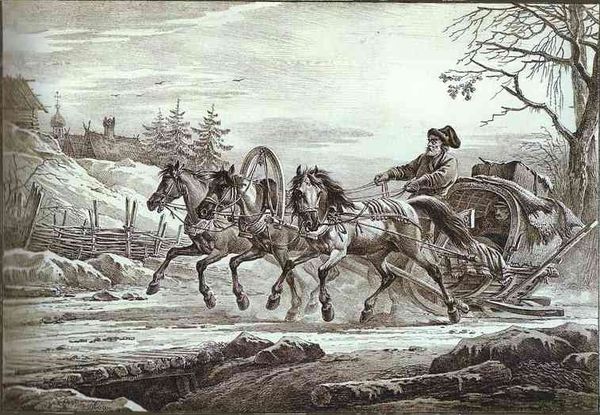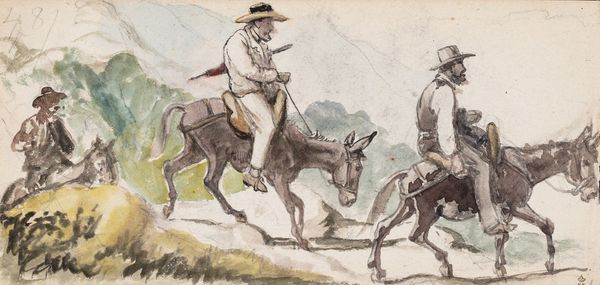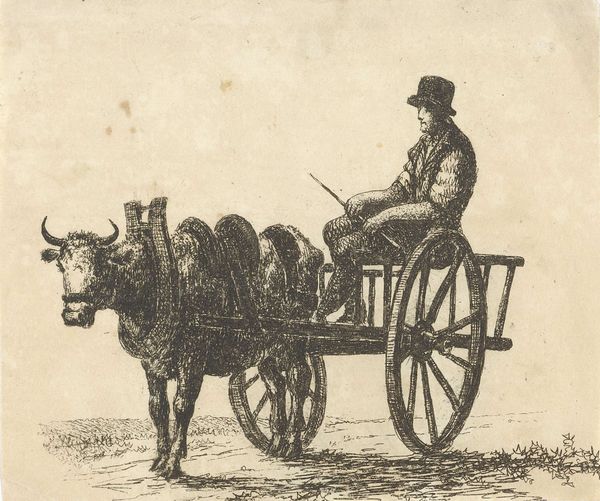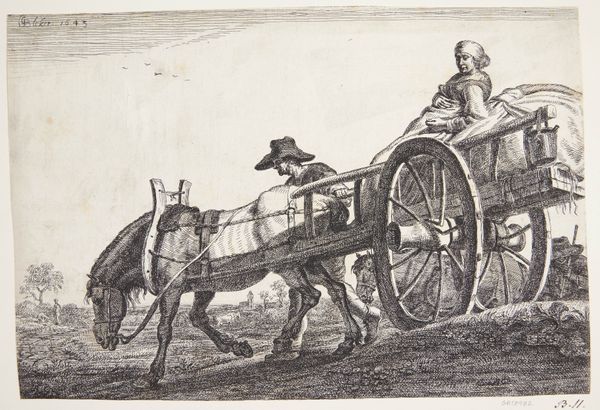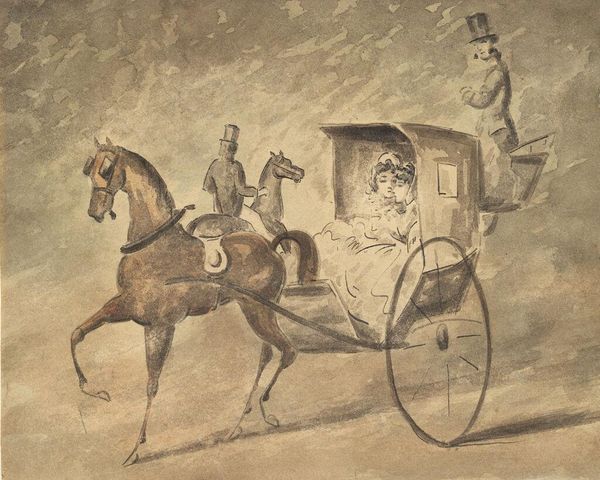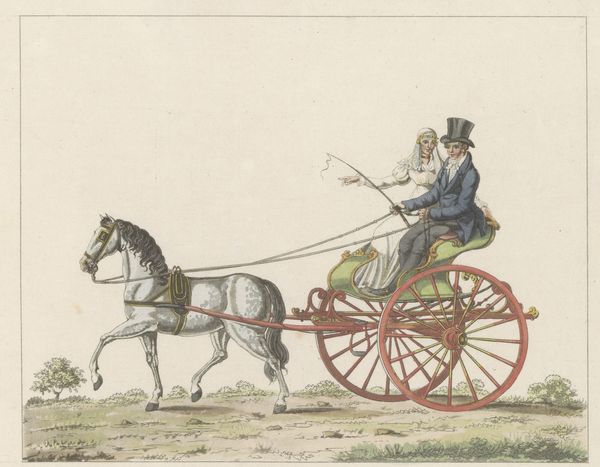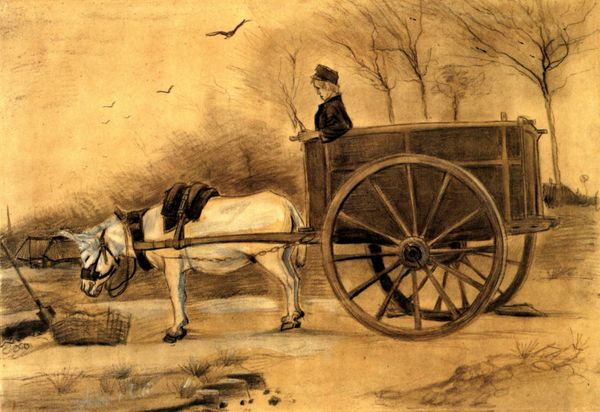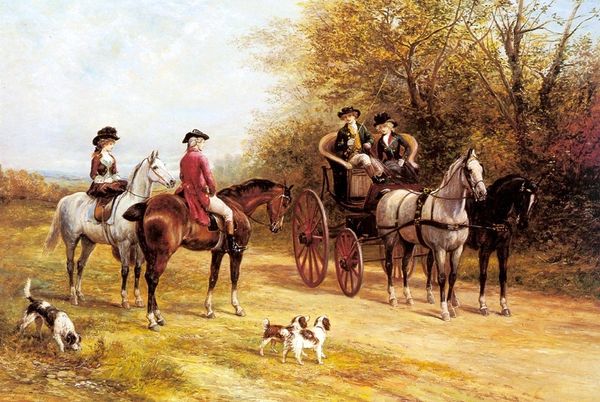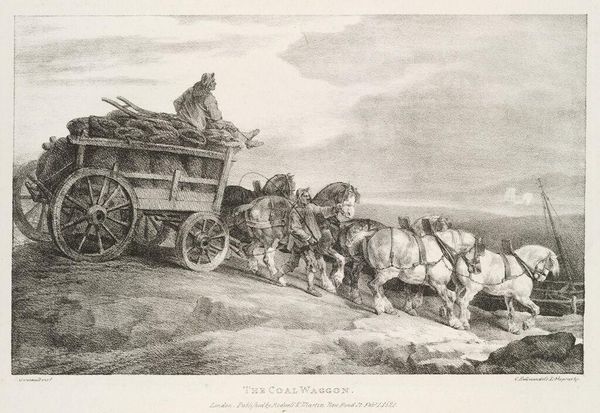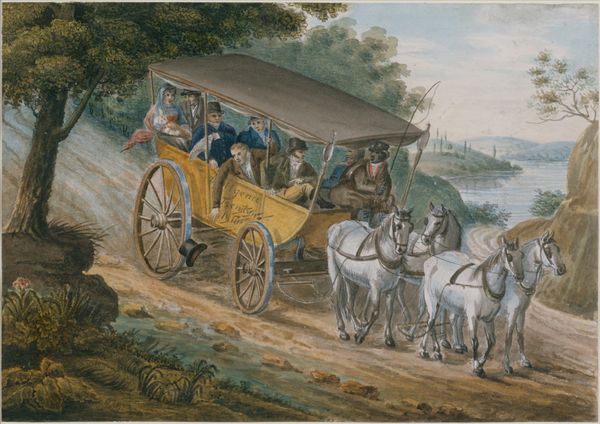
drawing, pencil, charcoal
#
portrait
#
drawing
#
landscape
#
charcoal drawing
#
coloured pencil
#
romanticism
#
pencil
#
horse
#
charcoal
Dimensions: 36.5 x 51 cm
Copyright: Public domain
Curator: Here we have Alexander Orlowski’s "Peasant in a Cart," dating from 1812. The piece, residing at the Tretyakov Gallery in Moscow, is rendered with pencil and charcoal, a seemingly simple drawing that belies its depth. Editor: My initial reaction is one of melancholic stillness. There's a weariness conveyed by the slumped posture of the peasant and even in the drooping head of the horse, it's more than a pastoral scene. Curator: Orlowski, working in the Romantic period, often depicted the lives of common people. "Peasant in a Cart," then, speaks to the societal structure of the time and the artist’s engagement with it. There’s a tension inherent in the genre. These images shaped how elites viewed rural life. Editor: And what does this composition evoke symbolically? Consider the placement; the figures are traveling from left to right, perhaps representing the passage of time. The setting appears vaguely Eastern European, if you ask me. The use of a single horse emphasizes the reliance on manual labour and animal power, which seems representative for many European landscapes from that era. Curator: Yes, though Orlowski, born in Poland, later worked extensively in Russia, developing a visual language of Russian rural life for a broad, primarily aristocratic audience. What interests me is the framing here: the soft lines of the sky seem to soften the burden carried by both horse and rider. It certainly served an important role for Russian genre art that became prevalent afterwards. Editor: Indeed. The stark contrast in the pencil work used to create shadow evokes a sense of harsh reality underlying the seemingly peaceful moment. It contrasts rather interestingly with a golden wash, and imbues it with more than documentary intention, for me. It invites you to contemplate a very simple, recurring image, from which you may consider how culture frames those living at a means. Curator: Precisely, it brings us to consider the very dynamics of cultural production. As an iconographer, it strikes me you may regard such subjects themselves, peasantry for example, as potent symbols across different cultural and temporal milieus. Editor: Of course, Alexander. Even the humblest scene is pregnant with symbolic potential. Thanks for illuminating these crucial social layers within Orlowski's drawing! Curator: Likewise, your interpretation of the emotional resonance adds another layer of depth. It’s so wonderful to reflect on its potential significance even centuries later.
Comments
No comments
Be the first to comment and join the conversation on the ultimate creative platform.
